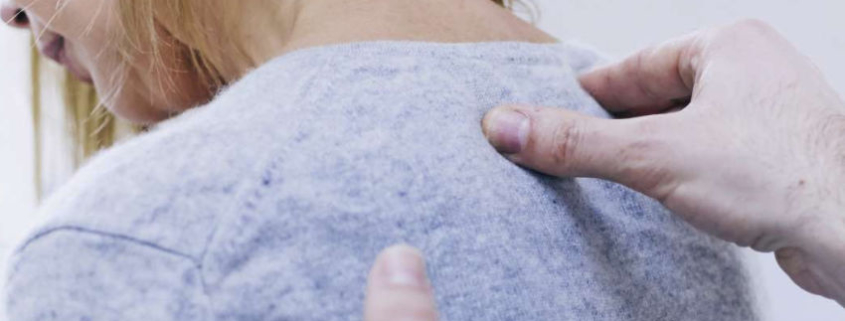Hunched back Scheuermann’s Kyphosis (osteochondrosis)
Scheuermann’s Kyphosis (osteochondrosis) is a condition that affects the growing skeleton in which the normal curve in the upper back (thoracic spine) is increased, forming a hunched back which can have a profound effect on total body development. Disturbance of the spinal end growth plates causes frontal spinal segment (vertebral body) wedging usually in a group of 3-4 vertebrae that results in a forward curve of the spine (kyphosis) during a growth spurt. This can then lead to some restriction in range of movement especially into extension (bending backwards). It is not known what triggers the abnormal growth in Scheuermann’s but there are theories that the bone may have been injured at some point, or that the area was weak before puberty. Biomechanical factors, repetitive trauma, malabsorption, vascular abnormalities, infection and hormonal imbalances may all play a role.
Your child, normally between the ages of 10 and 15 when the spine is growing rapidly may complain of upper back pain and stiffness and this is more likely following either exertion or long periods of inactivity. The pain can be made worse by activity including sports that require a lot of twisting, or forceful bending or arching backwards such as gymnastics, cricket, rugby (reaching backwards in the lineout or bending over at the breakdown) or athletic field events. A visit to the osteopath is often prompted not by pain, but by cosmetic concerns about the “hump” appearance of the back with Scheuermann’s. Curvature defects in particular pose issues not just in nerve irritation, but also in balance, coordination, breathing, digestion and the spine’s ability to act as a shock absorber.
The hump (kyphosis) will start to increase causing your child to slouch, their shoulders will slump forward and their low back will excessively arch backwards in compensation. Occasionally cases will be mild and won’t produce any symptoms; these cases will most likely not be diagnosed until well into adulthood.
Because a group of vertebrae affected by osteochondrosis during teenage years are more curved forward and less flexible than nearby areas of the spine, this increases mechanical strain on the section above or below the osteochondrosis area. This increased curve and reduced flexibility can then mean that there is an increased susceptibility to ligament, muscle and, sometimes, disc injuries in these neighbouring areas (neck and lower back) in adult life.
Your local osteopath will aim to restore normal, pain-free function and minimize future dysfunction of your spine. Osteopaths help subtly mobilise the stiffened upper back joints and osteopathic massage techniques that help to loosen any tight postural muscles and fascia. This may help reduce inflammation, decrease muscle spasms and muscle tension and increase joint mobility which in turn aims to prevent potential progression or worsening of the curve. Treatment will vary depending on the severity of the curve, the flexibility of the curve and the patient’s age.
The osteopath will be able to prescribe rehabilitative exercises that will help strengthen the postural muscles.
Contact your osteopath for further advice and to make an appointment. Diagnosis of Scheuermann’s kyphosis is based on a physical exam—including observation of posture—and if necessary analysis of X-rays and any other needed imaging tests. In a small number of cases conservative management is unsuccessful; in these cases surgical intervention may be required.



